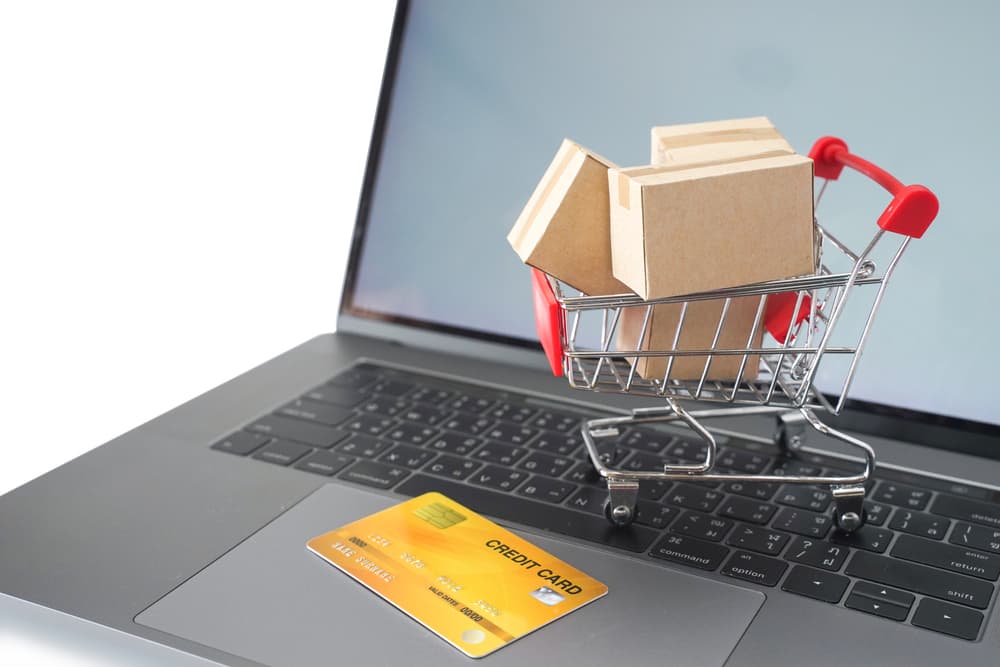Master your ecommerce order fulfillment strategy. Explore fulfillment models, technology solutions, and tips to reduce costs and confidently scale.
What Is Ecommerce Fulfillment and Why Does It Matter?
In the modern digital economy, ecommerce order fulfillment is a critical driver of customer satisfaction and long-term business growth. For online businesses, fulfillment refers to the complete journey an order takes, from receiving and processing online purchases to picking, packing, and shipping those items to customers.
Inconsistent fulfillment can lead to missed deliveries, higher return rates, and negative reviews. An effective order fulfillment strategy builds trust, shapes customer expectations, and boosts brand reputation.
As businesses shift from direct-to-consumer (D2C) to multichannel sales, fulfillment becomes even more complex. Understanding the mechanics of ecommerce fulfillment and knowing how to optimize each step will keep your business competitive while improving the customer experience from their first click to their doorstep.
Ecommerce Fulfillment Models
Choosing the right ecommerce fulfillment method can impact how efficiently you scale. For many ecommerce businesses, the decision starts with two primary paths: in-house fulfillment or outsourcing to a third-party logistics (3PL) provider.
In-house fulfillment gives you complete control over the entire fulfillment process, from storing inventory to picking, packing, and shipping. This model works well for startups or businesses with manageable order volumes that want hands-on oversight. However, it can slow to a crawl as order complexity increases. Managing fulfillment internally requires dedicated space, staffing, and systems, none of which scale well without significant investment.
By contrast, third-party logistics providers specialize in fulfillment services. A trusted 3PL ecommerce fulfillment service can handle inventory management, order processing, and last-mile delivery through established networks and modern tech platforms. This approach reduces operational overhead and enables faster, more reliable fulfillment.
As your ecommerce company grows and enters new sales channels, working with a third-party logistics fulfillment company offers the flexibility and infrastructure needed to keep up with rising customer demand and avoid bottlenecks. Whether you're shipping locally or internationally, a scalable approach with a trusted fulfillment provider can help you meet expectations and stay competitive.

Choosing the Right Fulfillment Partner
Finding the right fulfillment partner is a vital strategic decision for ecommerce businesses. The ideal provider should align with your fulfillment strategy, support your current operations, and scale with your growth. Use the following criteria to guide your selection.
Assess Your Fulfillment Needs
Start by evaluating whether the ecommerce fulfillment provider has experience with your product type or vertical. Fulfillment needs can vary dramatically between apparel, perishables, electronics, and subscription boxes. Providers familiar with your category are more likely to anticipate challenges and optimize the fulfillment processes for speed and accuracy.
Evaluate Provider Capabilities
It’s also worth investigating their customer support and technology stack. The best providers offer real-time inventory tracking, intuitive dashboards, and seamless integrations with your ecommerce platform. Tools like API access and EDI compatibility can significantly streamline operations, especially as you expand to new markets.
Plan for Long-Term Growth
Finally, look for flexibility. Your fulfillment partner should offer scalable solutions that match your growth stage. Whether you're shipping 500 orders a month or 50,000, a strong provider becomes an extension of your team, helping you stay agile in a fast-moving market.
Key Steps in the Ecommerce Fulfillment Process
A well-run ecommerce fulfillment process involves more than just shipping a package. It’s a series of interconnected steps, each of which helps maintain speed, enhance accuracy, and improve customer satisfaction. Here’s how a typical order fulfillment process unfolds:
Receiving and Warehousing
The process begins when the inventory arrives at the fulfillment center. Staff scan and verify each shipment, checking it against advance shipping notices. Once received, products are shelved in an organized inventory storage system that supports efficient access. Solid inventory management practices at this stage are essential for tracking stock levels and avoiding delays downstream.
Picking and Packing
When an order is placed, the system generates a picking list. Staff locate each item and move it to a packing station. Accuracy matters, since errors at this stage create costly returns and poor reviews. Some fulfillment providers use barcode scanning or automated systems to streamline picking, packing, and shipping workflows.
Shipping and Delivery
Once packed, orders are handed off to carriers for delivery. The best fulfillment providers offer multiple ecommerce shipping options and route packages based on speed, cost, and customer location. Same-day or two-day options are increasingly standard, especially for competitive ecommerce businesses.
Returns Processing
Returns are a core part of the fulfillment cycle. A clear reverse logistics process, including inspection, restocking, and refunds, helps protect margins and maintain a positive customer experience.
A vendor-managed inventory service provider further simplifies many of these steps if you perform your inventory management in-house.

Technology-Enabled Ecommerce Fulfillment Solutions
Modern fulfillment is no longer just about warehouses and shipping labels. It also seeks to build an infrastructure that can adapt, scale, and connect seamlessly to broader operations. For growing ecommerce businesses, the right fulfillment solutions reduce operational complexity while improving speed, accuracy, and visibility.
One widely known option is Fulfillment by Amazon (FBA), which gives sellers access to Amazon’s logistics network to ship orders fast and handle returns. However, FBA may not be the right fit for businesses that want more control over branding or sell across multiple platforms.
For greater flexibility, many brands are adopting solutions that support real-time integrations with ERP systems, ecommerce platforms, and retail partners. Tools such as Web EDI help connect you directly with trading partners without complex infrastructure.
Platforms like Orderful also simplify ERP/EDI integration, enabling you to streamline onboarding, manage multiple workflows, and gain greater control over fulfillment and shipping costs from one system.
Whether you're scaling direct order fulfillment operations or entering wholesale markets, the right technology stack makes your fulfillment process faster, smarter, and more reliable.
Common Ecommerce Fulfillment Challenges
Even the most efficient ecommerce businesses face fulfillment challenges that threaten customer trust and margins. Whether you're managing a single warehouse or coordinating multiple ecommerce fulfillment centers, issues can escalate quickly, especially as volume increases.
Fulfillment challenges often include:
Late or misrouted customer orders due to disconnected systems or a lack of visibility. Avoid this by verifying that each transaction is transmitted and received successfully.
Rising ecommerce fulfillment costs tied to inefficient routing, poor packaging choices, or manual processes. Use automation and smart carrier selection to control spend.
Returns and errors caused by inaccurate picking or unclear product data. Ensure clear labeling and real-time inventory updates for reliable fulfillment.
Complex international fulfillment involving customs, documentation, and transit time variability. Partner with providers experienced in global shipping requirements to ensure you meet compliance standards.
Limited supply chain visibility, making it difficult to manage inventory and meet delivery windows. Connect systems with centralized, real-time data access for full visibility and control.
Small missteps, incorrect labels, delayed shipments, or poor communication can quickly lead to chargebacks and dissatisfied customers.
Looking to avoid costly fulfillment errors? See how Orderful helps prevent chargebacks by streamlining workflows.
How to Optimize Your Fulfillment Strategy
Scaling fulfillment enhances the systems that move your boxes. For long-term business growth, optimization starts with analyzing your current fulfillment operations and identifying areas where automation, analytics, or smarter infrastructure can make a measurable impact.
Expanding your fulfillment network is one of the most effective ways to optimize. Working with a fulfillment company that offers multiple regional or national fulfillment center locations can reduce delivery times, lower shipping costs, and minimize strain on any single facility.
Next, focus on how you manage inventory across channels. Real-time stock visibility, demand forecasting, and integrated data flows reduce errors and improve responsiveness, especially during peak periods.
Automation also plays a key role. Incorporating technological advancements into your operations can dramatically speed up processes. Integrating EDI into your ERP or CRM system offloads several manual tasks, and tools that streamline label generation, shipment routing, and carrier selection can shave literal hours off of daily workflows.
Ultimately, fulfillment optimization is all about adaptability. Learn how operational flexibility fuels business agility and keeps your brand responsive as markets shift.
Ready to Rethink Ecommerce Order Fulfillment?
Optimizing fulfillment doesn’t happen overnight, but it doesn’t require a complete overhaul. From choosing the right fulfillment partner to streamlining your tech stack, small operational shifts can create big wins in efficiency, scalability, and cost control. If you don't have the resources to manage a quickly growing operation, consider Fulfillment by Amazon (FBA) to free you up for more strategic tasks.
Whether you're scaling your direct-to-consumer business or expanding into new retail channels, the right systems make all the difference. Platforms like Orderful help simplify fulfillment by reducing manual tasks and speeding up partner integration, all while supporting long-term growth.
Speak to an EDI expert today and learn how Orderful can help you modernize your fulfillment operations.
- 01What Is Ecommerce Fulfillment and Why Does It Matter?
- 02Ecommerce Fulfillment Models
- 03Choosing the Right Fulfillment Partner
- 04Key Steps in the Ecommerce Fulfillment Process
- 05Technology-Enabled Ecommerce Fulfillment Solutions
- 06Common Ecommerce Fulfillment Challenges
- 07How to Optimize Your Fulfillment Strategy
- 08Ready to Rethink Ecommerce Order Fulfillment?
